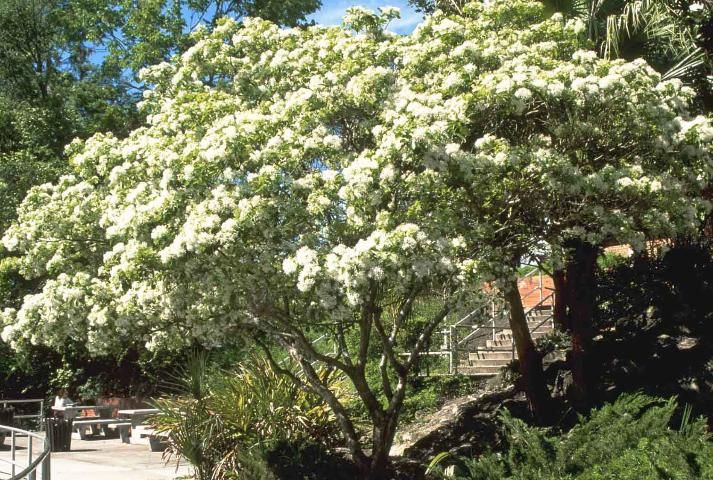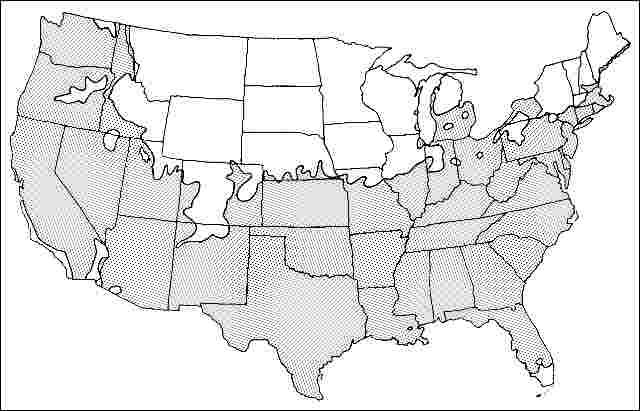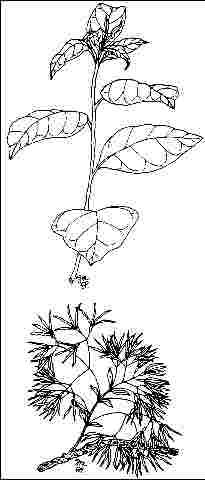Introduction
It is hard to think of a more beautiful, small, 20-foot-tall tree than Chinese fringetree when it is in full bloom. The pure white, fragrant flowers, emerging just as the dogwood flowers fade, hang in 4-inch-long, spectacular terminal panicles, which appear to cover the tree with snowy white cotton for two to three weeks. Flowers emerge at the terminal end of the spring shoot growth flush. This differs from the native fringetree, which flowers before leaves emerge. As with other white-flowered trees, Chinese fringetree looks best when viewed against a dark background. Female plants develop purple/blue fruits, which are highly prized by many birds. Fall color is yellow in northern climates, but is often an unnoticed brown in the South, with many leaves dropping to the ground a blackened green. The flowers can be forced into early bloom indoors.

Credit: Ed Gilman, UF/IFAS
General Information
Scientific name: Chionanthus retusus
Pronunciation: kye-oh-NANTH-us ree-TOO-sus
Common name(s): Chinese fringetree
Family: Oleaceae
USDA hardiness zones: 5B through 9B (Fig. 2)
Origin: not native to North America
Invasive potential: little invasive potential
Uses: sidewalk cutout (tree pit); parking lot island < 100 sq ft; parking lot island 100–200 sq ft; parking lot island > 200 sq ft; specimen; deck or patio; street without sidewalk; container or planter; tree lawn 3–4 feet wide; tree lawn 4–6 feet wide; tree lawn > 6 ft wide; highway median
Availability: somewhat available, may have to go out of the region to find the tree

Description
Height: 15 to 20 feet
Spread: 10 to 15 feet
Crown uniformity: symmetrical
Crown shape: round, vase
Crown density: moderate
Growth rate: slow
Texture: medium
Foliage
Leaf arrangement: opposite/subopposite (Fig. 3)
Leaf type: simple
Leaf margin: entire
Leaf shape: ovate
Leaf venation: pinnate
Leaf type and persistence: deciduous
Leaf blade length: 2 to 4 inches
Leaf color: green
Fall color: yellow
Fall characteristic: not showy

Flower
Flower color: white/cream/gray
Flower characteristics: very showy
Fruit
Fruit shape: round, oval
Fruit length: less than .5 inch, .5 to 1 inch
Fruit covering: fleshy
Fruit color: purple, blue
Fruit characteristics: attracts birds; showy; fruit/leaves a litter problem
Trunk and Branches
Trunk/bark/branches: branches droop; not showy; typically multi-trunked; thorns
Pruning requirement: little required
Breakage: resistant
Current year twig color: brown, gray
Current year twig thickness: medium, thick
Wood specific gravity: unknown
Culture
Light requirement: partial sun or partial shade, shade tolerant, full sun
Soil tolerances: clay; sand; loam; acidic; alkaline; occasionally wet; well-drained
Drought tolerance: moderate
Aerosol salt tolerance: unknown
Other
Roots: not a problem
Winter interest: no
Outstanding tree: yes
Ozone sensitivity: unknown
Verticillium wilt susceptibility: unknown
Pest resistance: resistant to pests/diseases
Use and Management
It forms a round ball if left unpruned but can be trained into a small tree with lower branches removed. It is naturally multi-trunked and is usually found this way in nurseries but can be trained into a small, single-trunked specimen. It is probably one of the finest accents available in the nursery trade! It makes the perfect patio tree, or can be planted along streets if provided with occasional summer irrigation. Although reportedly difficult to transplant, Chinese fringetree can be successfully moved quite easily with proper care. It is usually grown and sold in containers.
Chinese fringetree looks best in a sunny spot sheltered from wind. The tree appears more attractive in the deep South when grown with several hours of shade, but blooms best in full sun, on moist, acid soil, and will gladly grow in even wet soils. Chinese fringetree grows very slowly, usually 4 to 10 inches per year, but can grow 1 foot per year if given rich, moist soil and plenty of fertilizer. Fringetree tolerates moderate drought but looks best if irrigated occasionally during extended summer drought.
Propagation is by seed, cuttings, or layering. A number of horticulturists have figured out how to reliably germinate Chionanthus virginicus. Perhaps the techniques apply to the Chinese fringetree.
Pests
It is generally pest free.
Occasionally mites will infest the foliage.
Diseases
It is generally disease free.
Leaf spots can be caused by several genera of fungi. Most years, the leaf spots are not a problem and there is no cause for control.
Powdery mildews of different genera may attack Chinese fringetree.
Stem canker can cause premature defoliation.